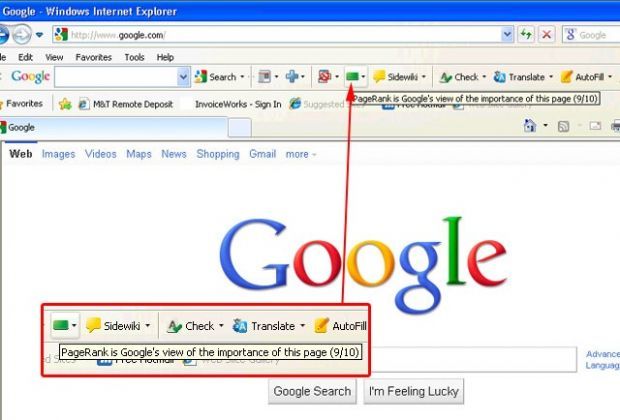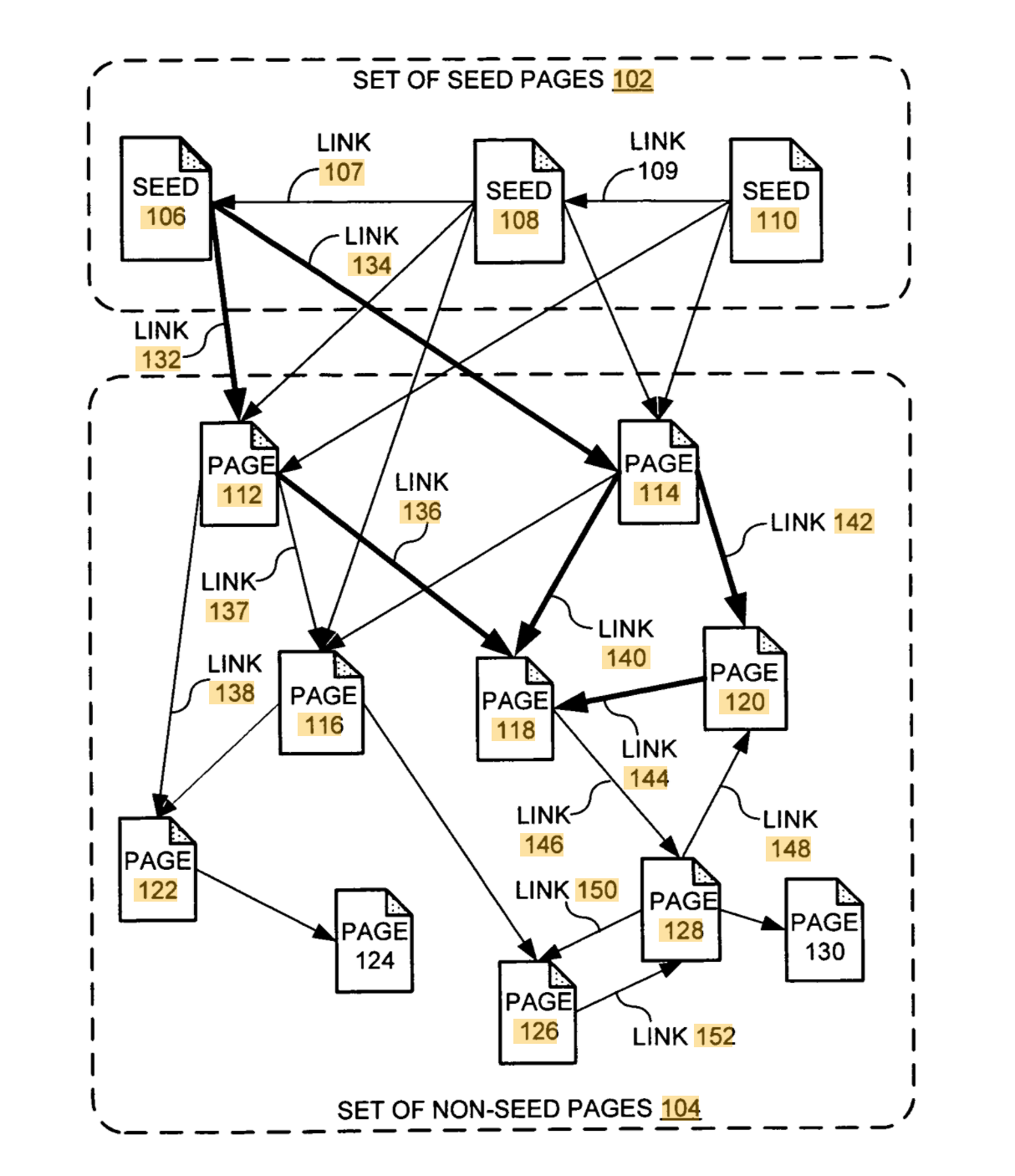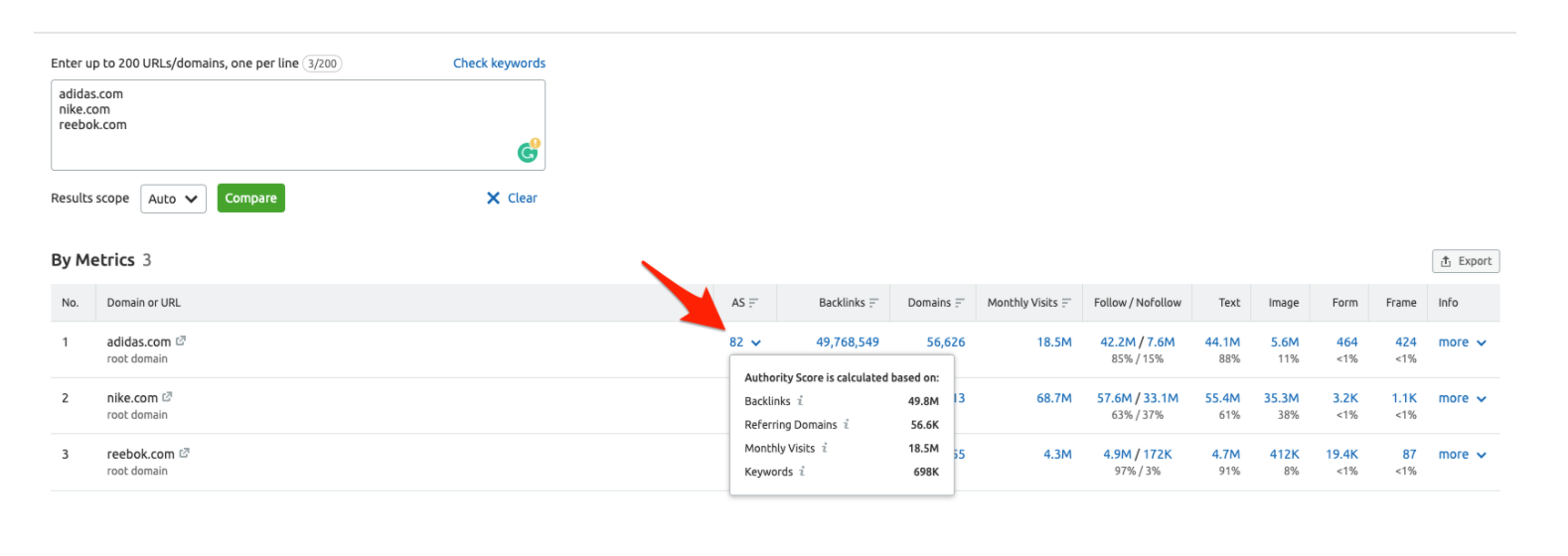Step back in time ten years, and PageRank was the SEO metric that everyone talked about.
If you have been working in the industry for more than a few years, you will undoubtedly remember the excitement that came when you heard that there had been an update to the PageRank toolbar.
With any luck, your recent efforts would have delivered an increase in your PageRank score, knowing that this meant that Google was now viewing your site as more authoritative than it previously was.
An increase in your PageRank score was a great demonstrator that your SEO strategy (and, in particular, your link building strategy) was working.
Fast forward to 2021, and PageRank is rarely mentioned.
But that is not because it is no longer important, just that it is no longer a public-facing metric. And when SEOs can no longer measure something, they eventually stop talking about it.
In this guide, we will dive deep into everything you need to know about Google PageRank, and its importance in 2021.
What is PageRank? A Brief History of Google PageRank Understanding How PageRank Works Factors That Influence(d) PageRank and That Still Matter Why Did Google Retire the PageRank Toolbar? Why PageRank Still Matters in 2020 Does a Replacement PageRank Metric Exist?What is PageRank?
If you remember PageRank, this is what probably best comes to mind when you think about it:
 Image Credit: Softpedia
Image Credit: SoftpediaThat is Google's infamous PageRank toolbar.
This is what we all came to associate with PageRank and the metric that SEOs became universally obsessed with.
But there is far more to PageRank than the toolbar.
PageRank — a System for Ranking Web Pages
PageRank is a system for ranking web pages that Google's founders Larry Page and Sergey Brin developed at Stanford University. And what it is important to understand is that PageRank is all about links.
The higher the PageRank of a link, the more authoritative it is.
We can simplify the PageRank algorithm to describe it as a way for the importance of a webpage to be measured by analyzing the quantity and quality of the links that point to it.
The PageRank Score
Perhaps unsurprisingly, PageRank is a complex algorithm that assigns a score of importance to a page on the web.
But as far as the everyday SEO was concerned, PageRank was a linear representation of a logarithmic scale of between 0 and 10 that was displayed on the PageRank toolbar.
A PageRank score of 0 is typically a low-quality website, whereas, on the other hand, a score of 10 would represent only the most authoritative sites on the web.
The key to understanding PageRank scores is that it uses a logarithmic scale. Not sure what that means in layman's terms?
A logarithmic scale is a way of displaying numerical data over a very wide range of values in a compact way—typically the largest numbers in the data are hundreds or even thousands of times larger than the smallest numbers.
— Wikipedia
As reported by Search Engine Watch, "It has an estimated base of 4-5. In other words, assuming a base of 5, PR2 links are comparable to 5 PR1 links; a PR6 link is comparable to 5 PR5 links, and so on."
Very quickly, we can see that a PR10 link is comparable to thousands of PR1 links.
The reason why SEOs became so fixated on this metric is that PageRank passes from one page to another, meaning that a website can gain authority by being linked to from another that has a higher PageRank score.
Quite simply, PageRank (that is passed between websites by links) helps a website to rank higher, and the algorithm is based around the concept that a page is deemed to be important if other important pages link to it.
Google still uses PageRank as part of its algorithm today, but the original patent has expired and, in this original form, hasn't actually been used since 2006, and the one that we now see is ultimately far more complex.
A Brief History of Google PageRank
The first PageRank patent was filed on September 1, 1998, and became the original algorithm that Google used to calculate the importance of a web page and rank these.
In short, Google was literally formed based upon Sergey Brin's idea that information on the web could be ranked based upon a page's link popularity, that the more links point to a page, the higher it ranks.
And if we take a look at the paper that introduced Google, we can clearly see PageRank referenced when explaining the search engine's features:
The Google search engine has two important features that help it produce high precision results. First, it makes use of the link structure of the Web to calculate a quality ranking for each web page. This ranking is called PageRank and is described in detail in [Page 98]. Second, Google utilizes link to improve search results.
— The Anatomy of a Large-Scale Hypertextual Web Search Engine - Sergey Brin and Lawrence Page
PageRank is literally what made Google so unique.
The paper goes on to explain that, "The citation (link) graph of the web is an important resource that has largely gone unused in existing web search engines."
The Introduction of the Google Toolbar
In 2000, Google introduced the toolbar that we all now come to remember as the way in which we could see our site's (and our competitors') PageRank score.
As a result of this, SEOs began to become fixated solely on increasing PageRank as a metric for improving rankings, driven largely by a simplified understanding of the algorithm that suggested that a web page with the highest number of links should rank the highest.
A simple explanation of the approach by many in the early 2000s was that their goal was to get as many links as possible from web pages with as high PageRank as possible.
This, of course, began to see PageRank manipulated, with money changing hands for links as well as what many of us will remember as link farms.
Fast track almost 15 years, and Google would stop updating this public-facing toolbar in 2014 (with the last confirmed update being December 2013) and retire it completely in 2016.
Of course, this doesn't mean that Google stopped using PageRank as part of the algorithm, just that it stopped being a public-facing metric.
An Updated PageRank Patent
The original PageRank patent from 1998 expired in 2018 and, to the surprise of many, wasn't renewed. Around this time, a former Google employee confirmed that the original algorithm hadn't been used since 2006.
But that doesn't mean PageRank is dead, far from it.
The original patent was replaced by this new one. To fully understand the differences with the original, we recommend you read Bill Slawski's analysis here.
This new patent references "seed sites in the trusted seed sets" and defines these as "...specially selected high-quality pages which provide good web connectivity to other non-seed pages," with two given examples being The Google Directory (this was still live when the patent was filed) and the New York Times.
"[Seed sites] need to be reliable, diverse enough to cover a wide range of fields of public interests & well connected to other sites. They should have large numbers of useful outgoing links to facilitate identifying other useful & high-quality pages, acting as “hubs” on the web."
The new patent looked to give a ranking score to a web page based upon how far away it is from a seed set. That said, this patent doesn't actually reference PageRank (or claim to be an updated version of the algorithm).
Rather, it has been understood by the SEO community that it acts as a PageRank modifier based upon the proximity to the seed set of sites.

Understanding How PageRank Works
Quite simply, PageRank is fascinating.
It is something that every SEO (and link builder) should understand in-depth if only to provide context around the reason why links remain one of Google's top 3 ranking factors.
But just how does PageRank work?
When the patent was first filed and Google's early algorithm developed, it was based around the theory that a link from one website to another acted as a vote of trust and authority. And, therefore, the more links (votes) that point to a page, the more it should be trusted and, therefore, rank higher.
But, as defined in the original paper, "PageRank extends this idea by not counting links from all pages equally, and by normalizing by the number of links on a page."
A link isn't simply a straight vote. The authority of a page is taken into account. A link from a PageRank 6 page is ultimately a more authoritative vote than one from a PageRank 2 page.
And this flow of PageRank between pages is sometimes referred to by SEOs as 'link juice.'
But let's look at the calculations behind PageRank:
"We assume page A has pages T1...Tn which point to it (i.e., are citations). The parameter d is a damping factor which can be set between 0 and 1. We usually set d to 0.85. There are more details about d in the next section. Also, C(A) is defined as the number of links going out of page A. The PageRank of a page A is given as follows:
PR(A) = (1-d) + d (PR(T1)/C(T1) + ... + PR(Tn)/C(Tn))
Note that the PageRanks form a probability distribution over web pages, so the sum of all web pages' PageRanks will be one."
What this means, in simpler terms, is that the PageRank of Page B is calculated by multiplying the PageRank of Page A by 0.85. This is known as the dampening factor.
If Page B then links to Page C, this receives 85% of B's PageRank (72.25% of Page A's).
If a web page has no links pointing to it, that page doesn't begin with 0 PageRank, rather 0.15.
But things get even more complicated when there is more than one external link on a page.
As referenced in this 2004 post on Search Engine Roundtable:
If you put a link from page A to page B, page A will distribute PageRank to page B. Page A's PageRank does not get diluted by linking out, but the links are worth less, in terms of the value of the PageRank, when there are more links on the page A.
— Barry Schwartz
PageRank is complex, and to understand how it works in more detail; you can check out this detailed guide that gives an introduction to PageRank for SEO.
Factors That Influence(d) PageRank and That Still Matter
Of course, there are, and were, factors that influence PageRank.
We have already covered the fact that not all links are equal in terms of the PageRank that they pass. But just what are some of the factors that can (and have previously done so) influence PageRank?
We will look specifically at:
Anchor text The likelihood of being clicked Internal links Nofollow linksYou need to understand not only what these influencing factors are but also how they apply to SEO in 2021, which you need to be using and which to avoid as part of your tactics of choice.
Anchor Text
Google's original paper referred to link anchor text by stating that, "The text of links is treated in a special way in our search engine" and that, "anchors often provide more accurate descriptions of web pages than the pages themselves."
In the early days of Google, anchor text had a key influence on the rankings of a page.
If you wanted to rank for the term "red shoes," the more links you had that used that term as an anchor text, the higher you could rank.
Link building became a race between SEOs to see who could gain as many exact match anchor text links as possible from high PageRank pages.
It worked (for some time) but was sheer manipulation of Google's Webmaster Guidelines and, specifically, this is considered as a link scheme.
Fast forward to 2021, and the overuse of anchor text manipulation will result in toxic links and potentially a manual penalty or algorithmic adjustment.
The Likelihood of a Link Being Clicked
The likelihood of a link being clicked is a key influencer of PageRank and is referenced by Google's reasonable surfer patent.
The original PageRank algorithm assigned an equal weight to links on a page. Whereas, 2004's Reasonable Surfer patent indicates that not all links are as likely as one another to be clicked; therefore, giving a different value to different links, depending upon their potential to be clicked.
A given example of links that are less likely to be clicked include 'terms of service' links and banner advertisements, but could also include links in a footer or a similar location.
Internal Links
Internal linking is a powerful SEO tactic, and there is a good reason why.
You can help PageRank to flow through your site with a solid internal linking structure, and once you understood how this works, it is easy to see why this tactic can have such a noticeable impact, especially when linking to pages that are not linked to from anywhere else.
You can learn more about how to effectively use this tactic in our guide to internal linking.
NoFollow Links
NoFollow links prevent(ed) the flow of PageRank until recently when this became a hint.
Historically, SEOs sometimes used the NoFollow attribute to sculpt the flow of PageRank – on the basis that if a page had 5 external links, PageRank would all pass through the one followed link if 4 of the 5 were nofollowed.
In 2009, however, Google's Matt Cutts confirmed that this would no longer work and that PageRank would be distributed across links even if a NoFollow attribute was present (but only pass through the followed link).
Learn about Nofollow, Sponsored, and UGC Links
Why Did Google Retire the PageRank Toolbar?
SEOs became obsessed with PageRank, and it quickly became the most focused on SEO tactic, even above creating great content and a solid user experience.
The problem was that by publicly sharing a PageRank Score, this became easier for SEOs to manipulate, alongside influencing factors such as anchor text, nofollow, and the reasonable surfer model.
SEOs knew how they could use PageRank to rank their websites higher, and they took advantage of this.
If we look at this from Google's perspective, the public-facing PageRank toolbar was the problem. Without this, there was no accurate measure of a web page's authority (at least officially).
Ultimately, SEOs abused PageRank and used it to manipulate rankings, leaving Google with no real choice other than to retire the toolbar, which happened in 2016.
Why PageRank Still Matters in 2021
PageRank still matters in 2021.
Just because there is no longer a toolbar that gives us a web page's PageRank score doesn't mean it is not still used.
In fact, in 2017, Google's Gary Illyes confirmed on Twitter that they were still using PageRank.
DYK that after 18 years we're still using PageRank (and 100s of other signals) in ranking?Wanna know how it works? https://t.co/CfOlxGauGF pic.twitter.com/3YJeNbXLml
— Gary 鯨理/경리 Illyes (@methode) February 9, 2017PageRank has never gone away, and understanding how it works can only help you to be a better SEO. If you have still not read Google's original paper, you should do so.
Does a Replacement PageRank Metric Exist?
Google has never officially released a new version of the PageRank toolbar, but, of course, PageRank is still very much used by Google.
We just can't measure it with a tool anymore.
A number of SEO software tools and platforms have rolled out their own authority metrics, and SEMrush has our own ' Authority Score.'

Authority Score is a compound domain score that grades the overall quality of a website and tells you how impactful a backlink from a site can be for your SEO, and is based upon:
Backlink data, including referring domains, follow & nofollow links, and more. Organic search data, including organic search traffic and keyword positions. Website traffic data (monthly visits).Of course, this metric uses backlink data as part of the scoring algorithm but is not intended to directly replace PageRank.
And this is something you need to understand.
Third-party metrics are not used in Google's algorithm. They never have been and never will be, yet are intended to help you to measure a site's relative authority against competitors and other sites on the web.
Remember, PageRank isn't dead.
We might not have a toolbar anymore, but that doesn't mean we don't need to understand how it works and the factors that influence it.
In many ways, it is a good thing that SEOs stopped obsessing over this single metric, given that it contributed towards a shift that means, largely, the industry isn't relying on manipulative tactics.
SEOs abused PageRank, and we lost the toolbar because of this, but that is not necessarily bad in the eyes of many.
Innovative SEO services
SEO is a patience game; no secret there. We`ll work with you to develop a Search strategy focused on producing increased traffic rankings in as early as 3-months.
A proven Allinclusive. SEO services for measuring, executing, and optimizing for Search Engine success. We say what we do and do what we say.
Our company as Semrush Agency Partner has designed a search engine optimization service that is both ethical and result-driven. We use the latest tools, strategies, and trends to help you move up in the search engines for the right keywords to get noticed by the right audience.
Today, you can schedule a Discovery call with us about your company needs.
Source:





